- See some of the 22 pictures, that
symbolise Indian Heritage, as illustrated in the handcrafted Constitution of
India And Food for Thought.
Just as while researching for an essay
on how Article 30
and RTE have damaged Hindu rights I got to know
that the first draft of the Indian Constitution was written by Sir B N Rau by
October 1947 and almost
every clause of the first draft had a marginal note giving references to the
corresponding provisions
in other countries ka constitution or Government of India (GOI) Act 1935
SO
ALSO whilst researching on the deeper meaning and source of mottos
in logos of key government constitutions I got to know that, “The original manuscripts of our Constitution in English and Hindi were handcrafted. The exquisite calligraphy of Shri Prem Bihari Narain Raizada in the English version and the intricate and stunning illuminated art works and borders was created by Shri Nandalal Bose and his students from Shanti Niketan.” Source Here
It happens
so often that one is searching for something but find some other important
information.
Further,
this MINT article states, “Prem Behari Narain Raizada handwrote the original Indian constitution. He wrote in a flowing italic style. Notably, the original version was beautified and decorated by artists from Shantiniketan including Nand Lal Bose and Beohar Rammanohar Sinha.”
The handcrafted
Constitution also shared pictures of Indian heritage and history. According to
this Indian Express article the draft shows the influence of the Epics. “While the Vedic period in the Constitution is represented by a gurukul scene that features in the section on citizenship, the part on directive principles of state policy begins with a scene from the Mahabharata, with the discussion between Arjun and Krishna before the onset of the war. For fundamental rights, the artists turned to the Ramayana, drawing a sketch of Ram, Lakshman and Sita returning home after the battle in Lanka.”
The same report reads, “While Emperor Ashoka can be seen propagating Buddhism in a scene in Part VII of the Constitution, part IX has a scene from King Vikramaditya’s court to signify that arts were promoted by the kingdom. The only female figure illustrated prominently in the Constitution, Lakshmibai, the queen of Jhansi, is sketched in her armour. Bose’s depiction of Mahatma Gandhi walking with a stick – created in 1930 to mark the Dandi March – also features in the Constitution, in the section on official language.”
Each part
of the Constitution had paintings that represent the Indian Civilization. You
can read the full article on www.culturalsamvaad.com and here All credits to culturalsamvaad.com
Format is
part number of constitution, picture and what it depicts.
Part 2 has an illustration of a Gurukul in a rishi’s ashram.
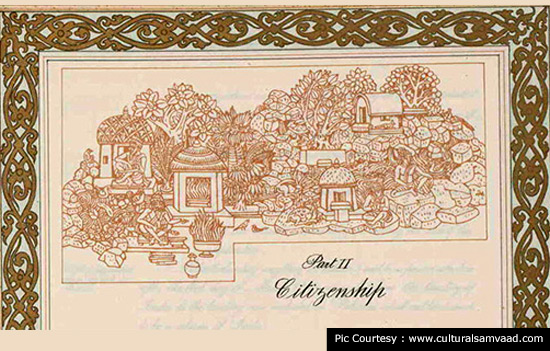
Part 3 illustration
has Sri Ram, Sita and Laxman.
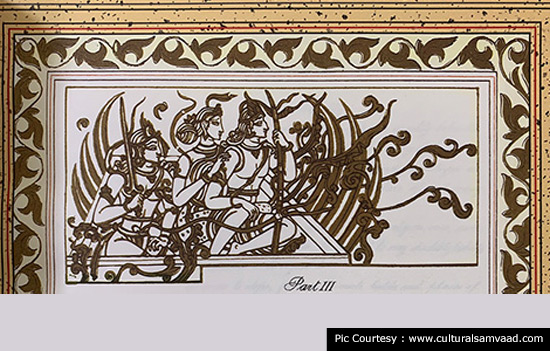
Part 4 illustration
has the Bhagavad Gita.
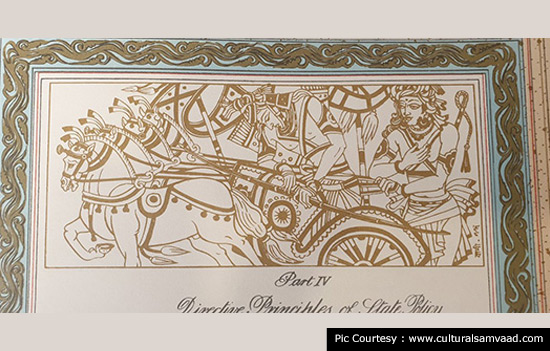
Part 5 illustration
is of Gautama Buddha.
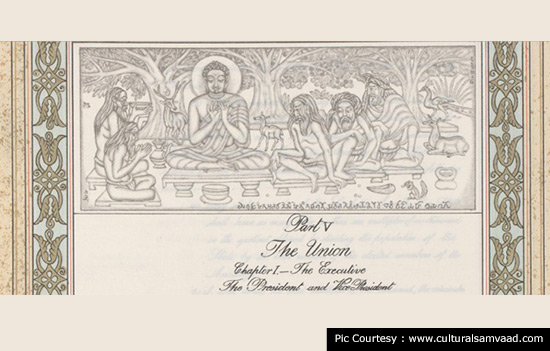
Part 6 has
a meditating Mahavira.
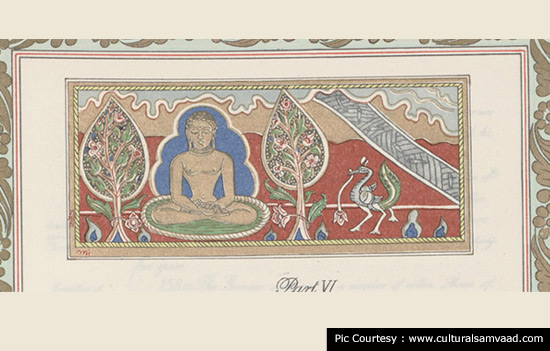
Part 9 has
court of the great Vikramaditya.
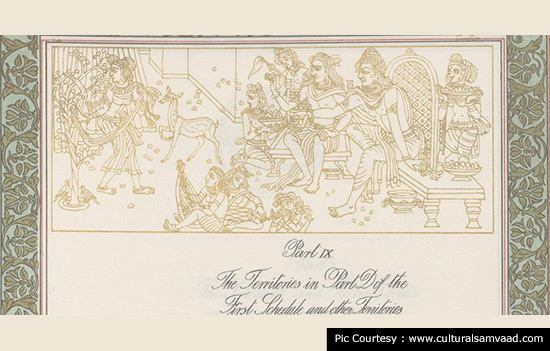
Part 10
depicts the Nalanda University.
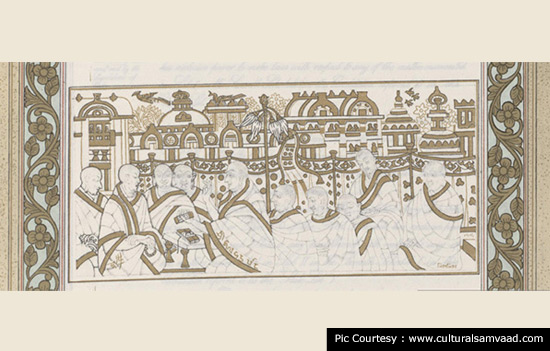
Part 12
depicts the Shiva Nataraja.
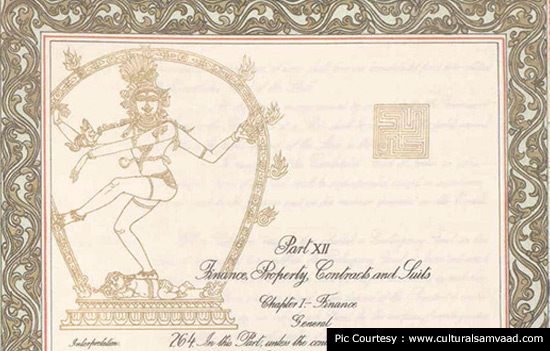
Part 13 has Arjuna’s Relief at Mahabalipuram, Tamil Nadu.
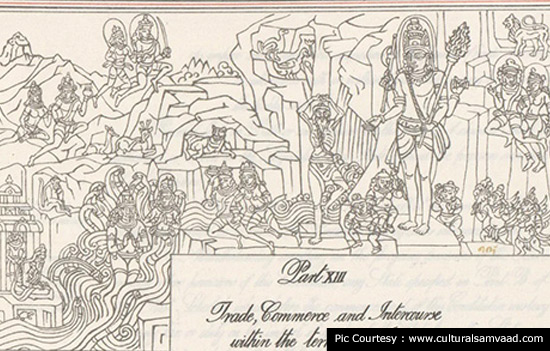
Part 14 has
a scene from the court of Emperor Akbar with a backdrop of Mughal monuments.
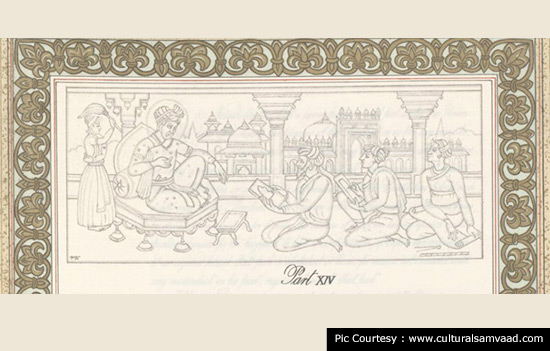
Part 15
depicts Shivaji Maharaj and Guru Govind Singhji.
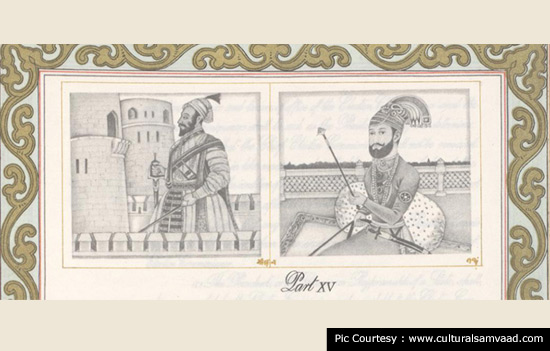
Part 17
depicts Netaji Bose.
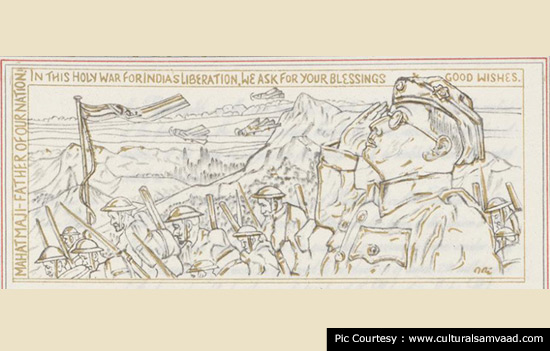
If you wish to download the handcrafted constitution in PDF (224MB) click on PDF
Food for thought
A reading
of the above and the Mottos in logos in government institutions clearly
indicate that the founding fathers were deeply rooted in Indian Heritage and
Civilization. So also the motto within the logos of the
above institutions, established during the 1950’s and 1960’s, were inspired from the Vedas, Upanishads and Puranas.
So, in spite of the majority of the
makers of modern India being influenced by European thoughts they probably
adopted Western concepts because whilst drafting the Constitution that was the
only available precedent. This is borne out by the first draft prepared in
October 1947 that gave references to Western constitutions
from where the clauses were borrowed.
Thus, it can be construed that the
founding fathers adopted a Western style constitution because of lack of
choice. Background to Article 30 provides insights.
Hariprasad and Sanjeev wrote, “The initial Draft versions of the Indian Constitution prepared by Dr K M Munshi had proposed explicit, and equal, educational rights to all communities. However, when this section was referred to the Minorities sub-committee of the Constituent Assembly, what came out was a very different version. It read:”
“All minorities, whether of religion, community or language, shall be free in any unit to establish and administer educational institutions of their choice, and they shall be entitled to State aid in the same manner and measure as is given to similar State-aided institutions.”
“The origin of Art 30 lies in the discussions held primarily in the Second Round Table Conference held in 1931. It was derived from the memorandum submitted by Indian Christian representatives then. The version of the clause in the memorandum actually asked for “equal rights for all religions”. However, in the joint agreement version, that particular phrase was left out.” End of quote.
If the Constitution were written today
would Lutyens Delhi allow pictures as were in the handcrafted constitution seen
above?
The above pictures and mottos make it
clear that the founding fathers did not want India to be secular (a non-defined
term), as is understood and interpreted.
THINK.
Also read
1. Chapter
wise commentary on Bhagavad Gita
2. Album
Bodh Gaya
3. Album
Osian Jain Temple
4. Album
Ujjain city (Vikramaditya)
5. Album
Nalanda University
6. Album
Mahabalipuram
7. The
saga of Shivaji Maharaj- From Agra to Salher
8. Netaji’s Bose contribution to India’s freedom
9. Decoding
Images in the Handcrafted Constitution of India